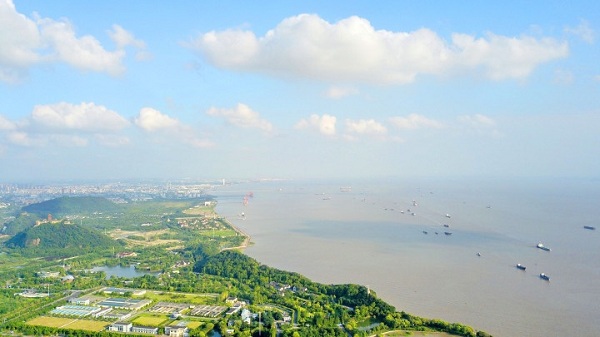
Lucid waters and lush mountains are seen in the Nantong section of the Yangtze River. [Photo by Xu Congjun/zgnt.net]
The Yangtze River Protection Law of the People's Republic of China took effect on March 1. It stipulates explicitly all the legal aspects regarding ecological protection of the Yangtze River, as well as the development along the Yangtze River Basin.
As a major city along the Yangtze River Economic Belt, Nantong has given top priority to the environmental protection of the country's longest river and has prevented over-development in the waterfront area over the past five years.
Since 2016, Nantong authorities have worked to restore the environment of the riverside district through a variety of measures like closing small, poorly managed, and heavily polluting enterprises, as well as by relocating homes and illegal wharfs.
All of the 368 local fishermen gave up their boats and nets in compliance with a fishing ban along the Yangtze River by the end of 2019, one year earlier than the national schedule. They were all relocated and included in the social security system, with 93.24 percent of them finding new jobs.
Nantong also led Jiangsu province in building two tank-cleaning stations along the river in 2020. In addition, all of the 412 wharfs in the city have been equipped with environmental protection facilities.
The city has also added more than 425 hectares of green area in the riverside district since the provincial government defined its requirement for green areas in March 2019. Its newly added green area in 2020 was 17 times the provincial standard.
Due to unified government planning and coordination, Nantong has turned places that used to be dirty and eyesores into green belts and parks. The city will continue to focus on sustainable, green development and environmental protection for generations to come.






